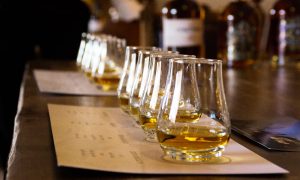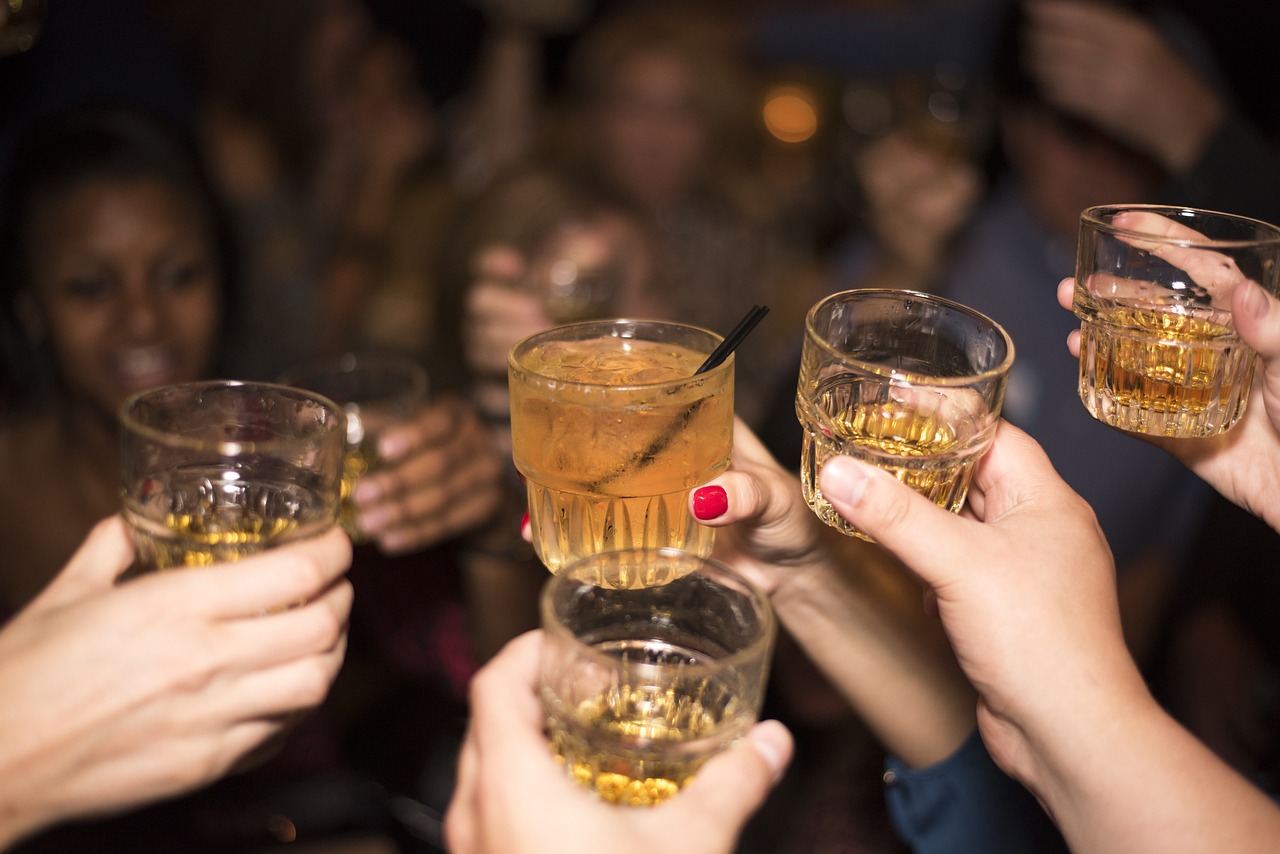Whiskey is one of the great treats in life. Once the most popular spirit, it lost ground to vodka in the 70s and 80s but is making a resurgence. Estimated to be a $66.5 billion industry in 2022, whiskey of all kinds has demonstrated massive growth, with several major whiskey categories doubling their outputs over the past 10 years. Scotch, however, is the biggest seller worldwide, with total sales amounting to more than American, Irish, and Japanese whiskeys combined. Here is some help in understanding the major catergories of whiskey.
All whiskeys are made from grain fermented and then distilled. When whiskey goes in the bottle, it has to be at least 40% alcohol by volume (ABV). With some exceptions, it’s aged in wooden barrels, although exactly what kind and for how long varies around the world. Variations in mash bill (the fancy term for the types of grain go in a whiskey), barrel type, aging time, and distillation technique are what account for the enormous breadth of this wonderful spirit.
Related: Is Commercial Moonshine Really Moonshine
Before we go any further, a quick word on spelling (there’s more detail here, if you’re interested): generally speaking, whiskey refers to American and Irish spirits, while whisky refers to a spirit made in Scotland, Canada, Japan, or anywhere else in the world. Personally, when referring to the spirit in general, I default to whiskey, simply because I speak and write in American English.
Scotch
The first written record of whiskey production, dating to 1494, comes from Scotland, and the country continues, in many ways, to be the center of the whiskey world (don’t @ me, bourbon fans). There are two basic kinds of Scotch whisky: malt and grain. Malt whisky is made only from malted barley. Grain whisky also includes other grains, like corn or wheat. The other legal distinction in the scotch category is between blended whiskies and single malt/grain whiskies. A single malt or single grain whisky is made at a single distillery; blended whiskies are made at multiple distilleries and mixed together.
RELATED: Building A Boilermaker: The Art Of Pairing Whiskey And Beer
Scotch can only be made in Scotland. It’s aged in used barrels—which may have originally held bourbon, wine, or port—for at least three years. Scotch is bottled at a minimum 40% alcohol by volume (ABV).
Generally speaking, Scotch blenders aim for a product which is consistent and drinkable. While there are plenty of good blended whiskies out there, Scotch snobs typically think of single malts as more interesting because each region and each distillery has a distinctive character (although it may be changing). Indeed, there’s quite a wide variation in the world of single malts, from lighter, fruit- or grain-forward drams to aggressive, peaty expressions heavy on salty and medicinal flavors. The list of most expensive whiskies in the world is always dominated by single malt Scotch.
Irish Whiskey
The word whiskey comes from the Irish phrase uisce beatha, or “water of life,” and the Irish are typically credited with being the first whiskey distillers. Just like their neighbors in Scotland, the Irish distinguish malt whiskey from grain whiskey
Scotch and Irish whiskey are different in several ways. One is Irish malt is very rarely smoked over peat, meaning it lacks the smoky, savory components of peated scotch. Another is the existence, in Ireland, of a category called pot still whiskey, which is made from a mix of malted and unmalted barley. “Green” barley contributes an added dimension of flavor which sets pot still whiskeys apart both from scotch and other Irish whiskeys.
Related: Rainy Weather Cocktails
Irish whiskey must be made in Ireland or Northern Ireland. In terms of taste, Irish whiskeys vary widely, from grassy to grainy to bourbon-like.
American Whiskeys

These days, thanks to the craft whiskey renaissance of the last fifteen years, the variety of whiskey styles made in the United States is as diverse as our great nation’s population. Historically, though, the landscape has been dominated by two categories: bourbon and rye.
Both styles have several things in common. Chief among their similarities is they must both be aged in new, charred oak barrels, a major source of flavor and aroma in America’s native whiskeys (remember scotch is always aged in used barrels).
Bourbon, which is by far the more popular category, is historically associated with Kentucky, which remains the seat of the American whiskey industry. Contrary to the popular imagination, however, bourbon can be made anywhere in the United States. Bourbon must be made with at least 51% corn, with the remaining 49% being some combination of other grains—typically malted barley and either rye or wheat. It’s a good entry point to whiskey for many drinkers, as its flavor profile tends to be sweet, leaning toward caramel, vanilla, soft spices, and wood.
Rye whiskey is bourbon’s northern counterpart, and although it’s long played second fiddle to bourbon in terms of sales, it’s been making a comeback in recent years. Rye, as you probably guessed, has to be made with at least 51% rye, with the remainder, again, being up to the distiller, but usually consisting of malted barley and corn. Rye grain imparts distinctive spice and fruit notes, making rye whiskey more assertive than its mellow southern cousin.
There are a number of other categories of American whiskey. They include Tennessee whiskey, which is essentially bourbon made in Tennessee and filtered through charcoal. Wheat whiskey is, you guessed it, made with mostly wheat. And blended whiskey—well, it’s a whole different thing.
Canadian Whiskey
Many whiskey drinkers turn up their noses at Canadian whisky, which is often viewed as inferior to Scotch or bourbon. But the fact is, our neighbors to the north have also been distilling for a long time, and history has yielded a distinctive style.
Most Canadian whiskies contain a lot of corn, just like bourbon. However, that’s where the similarities end. Canadian whisky has to be aged at least three years, a requirement which doesn’t exist for bourbon. There are also no restrictions on the type of barrel used—they can be new or used, charred or uncharred. In general, Canadian whisky is lighter, smoother, and less flavorful than American whiskey, which is the source of the snobbery around this spirit.
Finally, it should be noted Canadians commonly refer to all Canadian whisky as “rye,” for historical reasons. Canadian rye is not the same as American rye—it often doesn’t contain any actual rye grain.
Japanese Whiskey
With North America and the British Isles covered, we’re left with one other important whiskey region: Japan. Japanese whisky is similar to Scotch in most respects, because the industry’s pioneers modeled their product on Scotch. Commercial whisky distilling in Japan started in the 1920s.
Just like with Scotch, you’ll find both blended and single malt Japanese whiskies, and although this is a relatively young category, its profile is growing internationally.


